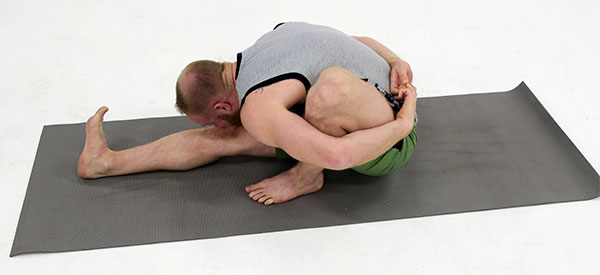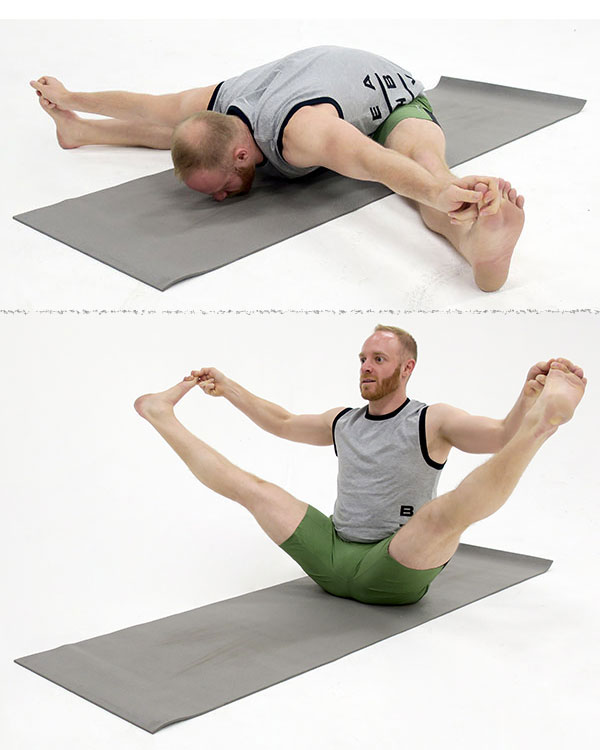What is Ashtanga Yoga, and What Are Its Benefits?
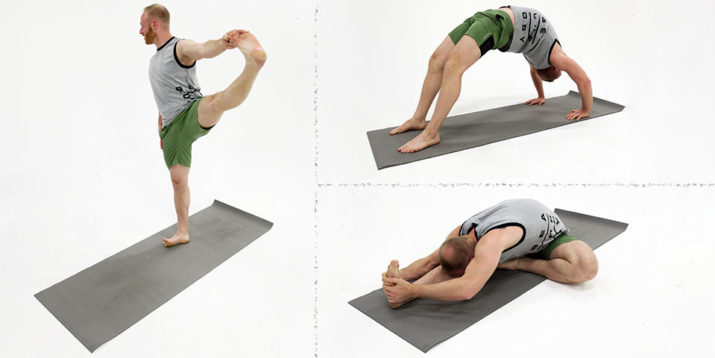
According to a survey, more than 36 million Americans practice yoga. So it looks like this 5,000-year-old Indian discipline is here to stay.
Among its more intense forms is ashtanga yoga, a rigidly-structured variation of vinyasa (or flow style) yoga designed to encourage consistent daily practice, promote independence from your instructor, and inspire advancement within its various series as you progress in strength and flexibility.
According to Selena Pang, an ashtanga instructor for more than a decade, the practice can be performed anywhere you go.
Once you’ve taken a few classes and memorized the series that comprise ashtanga yoga, it’s easy to practice anywhere: in your living room, a park, or even while traveling.
What Is Ashtanga Yoga?
Similar to other vinyasa forms, ashtanga is based on sun salutations (so get ready for those chaturangas), and is often referred to as a gymnastic practice for its advanced, contorting poses.
It follows a strict sequencing of postures within each of six different series, which steadily increase in difficulty.
New practitioners start by memorizing the ashtanga primary series and don’t typically advance to the next one until they’ve mastered it.
One of the main goals of ashtanga is to establish a consistent daily practice.
Whether it’s a good, hard, downright-awful, or anything-in-between day, you still practice. Just roll out your mat, and let your breath guide you, finding meditation in motion.
For those interested in starting ashtanga, your flexibility, strength, and skill aren’t nearly as important as your commitment to consistency.
Pang says, “I consider it my personal hygiene to practice daily, just like bathing and brushing teeth.”
What’s the Difference Between Vinyasa and Ashtanga Yoga?
Both vinyasa and ashtanga yoga coordinate breathing and motion, linking a breath to each movement.
This is the flow referred to in both practices, and as such, ashtanga can be considered a form of vinyasa yoga.
Where ashtanga yoga departs from vinyasa most noticeably is in the rigid choreography of its progressively vigorous movements, which don’t change from one practice to another unless you’ve graduated to the next series.
Ashtanga Yoga Poses You Can Practice at Home
If you’re ready to try out some ashtanga postures, we’ve got a few recommendations that come straight out of the series.
Tadasana (mountain pose)
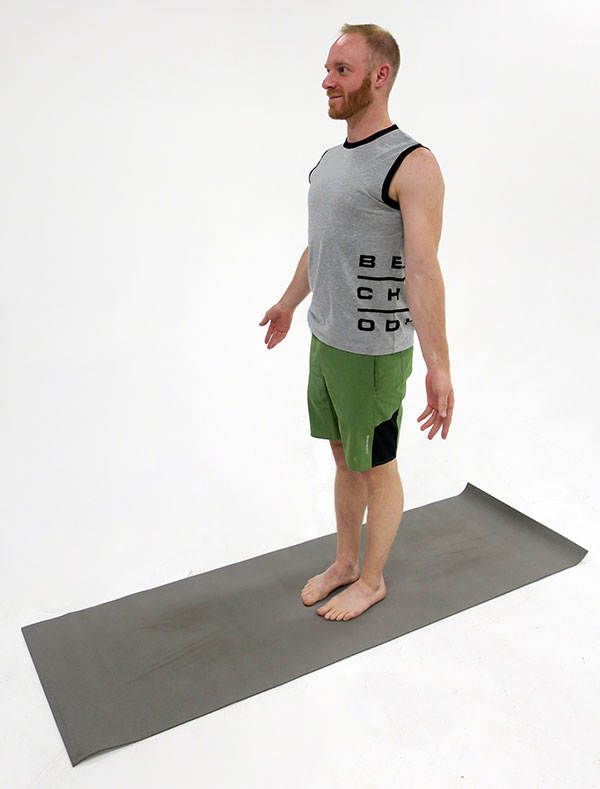
The foundation from which all standing poses are performed, tadasana is more complicated than it looks.
- Stand with your big toes touching and heels slightly apart with your hands at your sides, palms facing forward.
- Keeping your gaze straight ahead, draw your shoulders back and down as you lift your chest.
- Engage your thigh muscles by lifting your kneecaps as you tuck in your tailbone, holding the pose for 30 seconds.
Padahastasana (hands under feet)
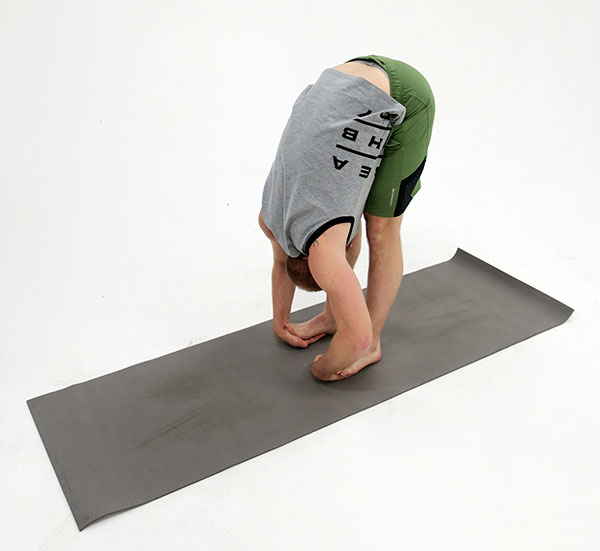
This variation on a traditional standing forward fold requires a little patience, as it’ll give you an intense hamstring stretch.
It also stretches the upper back at the bottom of the move, as well as the lower back, unless you have particularly loose hamstrings.
Starting in mountain pose, raise your arms straight up toward the ceiling, turning your triceps forward.
- Hinge at your hips and reach toward the floor with your knees slightly bent, folding your torso over your legs.
- Shift your weight onto your heels and place your hands underneath your feet, palms up. (Try to bring your palms completely underneath your feet so your toes touch your wrists.)
- To deepen the stretch, tilt your pelvis toward the ceiling as you straighten your legs, reaching the top of your head toward the tops of your feet.
- Shift your weight slightly forward on your feet so your hips align over your heels, and hold for 30 seconds.
Utthita hasta padangusthasana (hand to big toe pose)
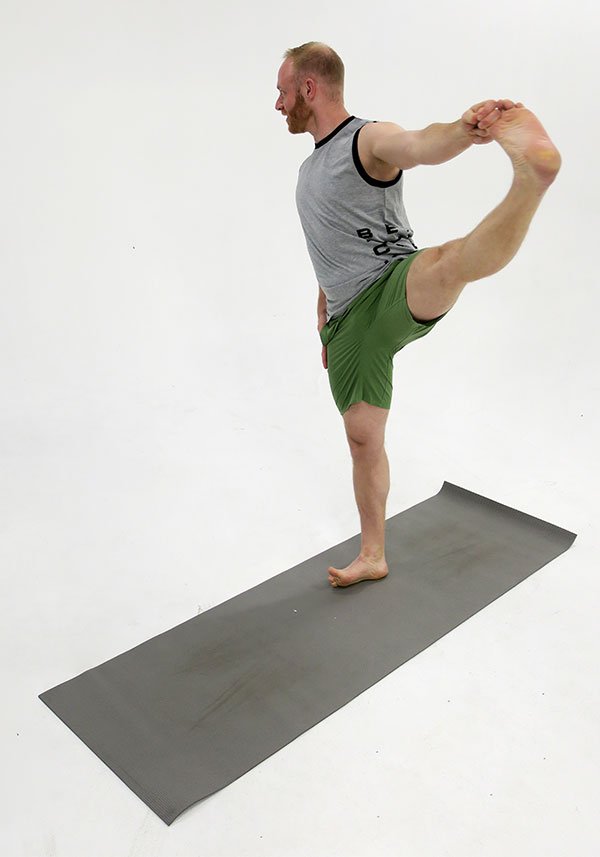
This standing pose stretches the hamstrings in the flexed leg while challenging your ability to balance on the other.
- Start in mountain pose, bringing your right knee toward your chest and looping your index and middle finger around your big toe.
- Slowly extend your right leg out in front of you, straightening your knee as much as you can without letting your back round. Once steady in the pose, swing your right leg out toward the right.
- Hold for 30 seconds, and reverse the move to return to the starting position. Repeat with the left leg.
Dandasana (staff pose)
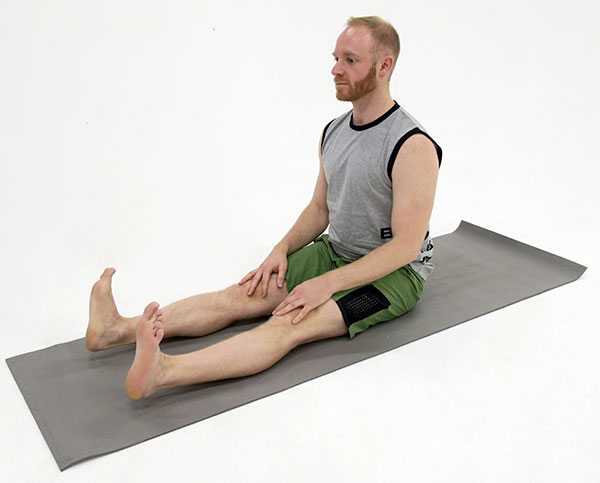
This is the foundation from which most seated poses are performed.
- Sit on the floor with your legs extended together in front of you, your feet flexed, and your toes pointed toward the ceiling.
- Lift your chest, engaging your abs and maintaining a slight arch in your back as your torso forms a perpendicular angle with the floor.
- Place your hands on your lap or beside your hips on the floor as you slightly rotate your thighs inward, and lift the crown of your head toward the ceiling.
Purvottanasana (upward plank)
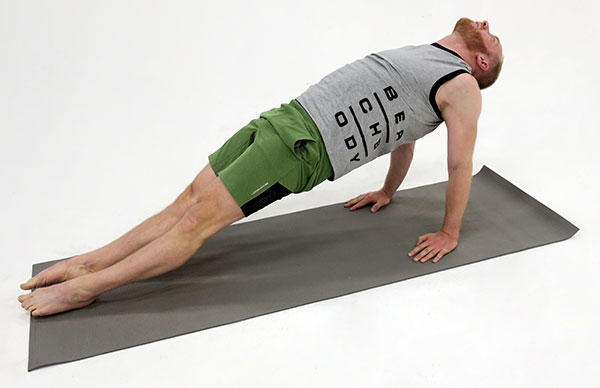
Another floor stretch, this counterpose to the chaturanga lengthens the muscles of the chest and shoulders, while strengthening the deltoids, arms, and core.
- Sit on the floor with your legs extended in front of you and your hands a few inches behind your hips, fingertips pointing forward.
- Bend your knees, placing your feet flat on the floor, and lift your hips toward the ceiling into a tabletop position, keeping your arms as straight as possible.
- Once your hips reach shoulder elevation, straighten one leg at a time.
- Continue to press your hips toward the ceiling, and gently let your head drop back, holding the pose for 30 seconds.
Janu sirsasana (head to knee pose)
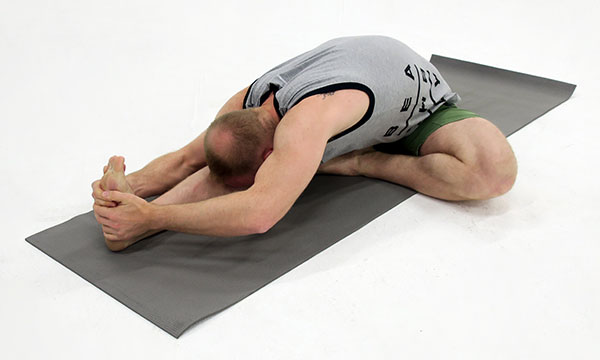
While the pose is called “head to knee,” the objective should be to fold forward as far as you can without rounding your back.
- Start in staff pose, and bring the sole of your right foot against the inside of your left thigh. Let your right knee open outward toward the floor.
- Without rounding your back, reach for your left foot with both hands, bringing your head as close to your left knee as you can.
- Hold for 30 seconds, and repeat on the other side.
Marichyasana I (ray of light pose)
This seated pose will target the muscles of your rotator cuff, as well as any tension in the lower and middle back.
- Start in staff pose, and bring your right knee toward your chest, placing your right foot flat on the floor as close to your groin as possible.
- Place the back of your right shoulder against the front of your right knee, and gently reach behind you with your right arm.
- Reach behind you with your left arm, and clasp hands (or wrists if possible).
- Hold for 30 seconds, folding forward over your left thigh if possible.
- Reverse the move to return to the starting position, and repeat on the other side.
Kurmasana (tortoise pose)
This comprehensive seated pose stretches the legs, back, shoulders, and chest.
1. Start in staff pose.

2. Separate your legs to slightly more than shoulder width, and fold forward at your hips, allowing your spine to round (like a tortoise shell).
3. Bend your knees slightly, and slide one arm at a time underneath your thighs, placing your palm on the floor.
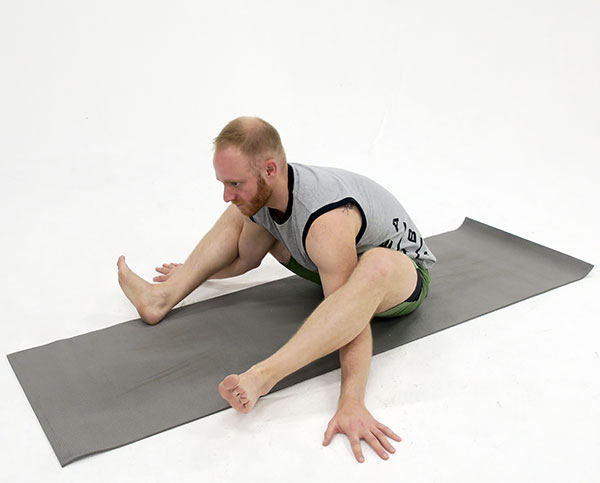
4. Keeping your knees and toes facing toward the ceiling, lower your chin toward the floor, and walk your palms out as far to the side — or behind you — as possible, holding for 30 seconds.
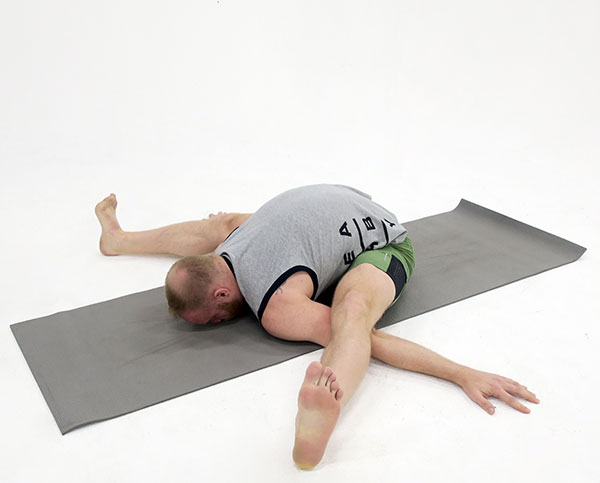
Upavistha konasana (seated angle pose)
In addition to stretching your hamstrings, this pose lengthens your adductors, the muscles of the inner thigh.
- Start in staff pose, and open your legs as wide as possible, with your feet flexed and toes pointed toward the ceiling.
- Making sure not to let your back round, hinge at your hips and slowly walk your hands forward.
- Keeping your legs extended, loop your index and middle fingers around your big toes, and hold for 30-60 seconds.
- Keeping your legs straight and your fingers looped around your big toes, engage your abs and rock back onto your tailbone.
- Hold for 30 seconds, then release your big toes and extend your legs together in front of you to return to the starting position.
Urdhva dhanurasana (upward bow, or wheel, pose)
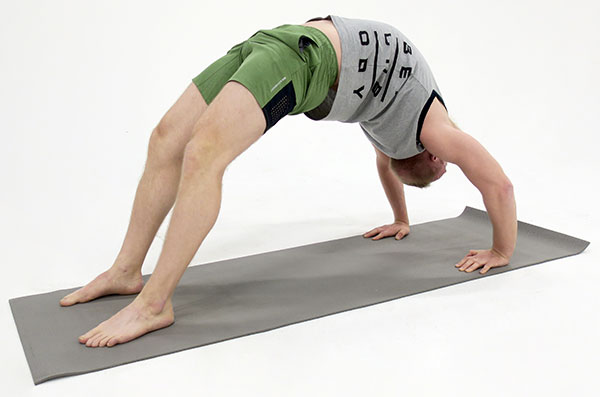
This backbend requires a fairly extraordinary shoulder range of motion, so approach the pose with caution.
- Lie on your back with your knees bent and feet flat on the floor, hip-width apart. Your heels should be close to your butt.
- Place your hands on the floor on either side of your head, fingers pointing toward your shoulders.
- Engage your abs and squeeze your glutes as you lift your butt off the floor, then press through your palms to lift your shoulders off the floor.
- Keep your elbows at shoulder width as you straighten your arms, letting your head hang as you deepen your backbend.
- Tuck your chin toward your chest and reverse the movement to return to the starting position.
Ashtakeaway
Ashtanga may not be the gentle, stretching yoga that you’re used to, but it offers something for practitioners of most experience levels.
Ashtanga is a rigorous daily practice that builds strength, flexibility, and independence.
With daily practice, ashtanga yogis learn determination and build habits to sustain them on even the most difficult days.

